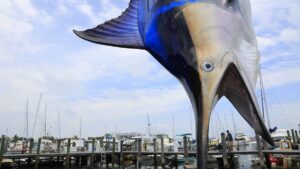Biotech big guns are buying up the minnows

Pic: REB Images / Tetra images via Getty Images
Last year the ASX’s biotechs began kicking goals they’d promised years ago, as small caps from eye disease curer Opthea (ASX:OPT) to breast density imager Volpara (ASX:VHT) launched their way into the collective consciousness.
The biotechs rising trend is not limited to Australia.
The global biotechnology sector is estimated to be worth $727.1bn by 2025, according to market researcher Grand View Research.
But where Australian investors in small companies really get excited is not in companies taking a drug right through to completion — a very risky business that sees only seven in 1000 succeed — but in takeovers.
UK company RS Components analysed data for almost 2500 acquisitions since 1998, and found deals spiked in 2018 thanks to large companies like Roche and Allergan absorbing smaller firms.

The data includes acquisitions since 2008 of 23 Australian human and animal drug and medical device companies, of which most took place in 2018 closely followed by 2017.
The companies acquired in 2018 were former ASX company Biota which was swallowed up as its later US incarnation Aviragen, MMJ’s (ASX:MMJ) old unit Phytotech was sold to a Canadian, ASX-listed RHS, unlisted TGR Biosciences, and the blockbuster Viralytics takeover by Merck for $500m.
The companies acquired in 2017 were NASDAQ-listed Nexvet, and unlisted NovoTech and Vivopharm.
In 2017, $US17bn was put into biotech companies, according to data from Crunchbase, either as investments or acquisitions.
While curing diseases like Alzheimer’s, which scientists don’t fully understand the cause of, are the blue sky illnesses which promise to be the future blockbusters, smaller targets tend to be where the money is made.
Morgan’s analyst Scott Power says high-risk disease states are anything to do with the brain, such as treatments targeting the central nervous system or dementia, because the failure rate is very high. Those targeting emotional states such as PTSD are also risky as they’re difficult to measure.
Companies with quality compounds working in fields that aren’t well served, such as ophthalmics like Opthea, are also good targets.
Related Topics

UNLOCK INSIGHTS
Discover the untold stories of emerging ASX stocks.
Daily news and expert analysis, it's free to subscribe.
By proceeding, you confirm you understand that we handle personal information in accordance with our Privacy Policy.








